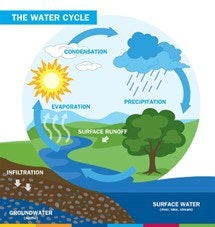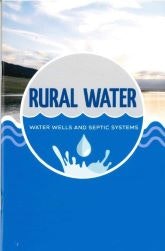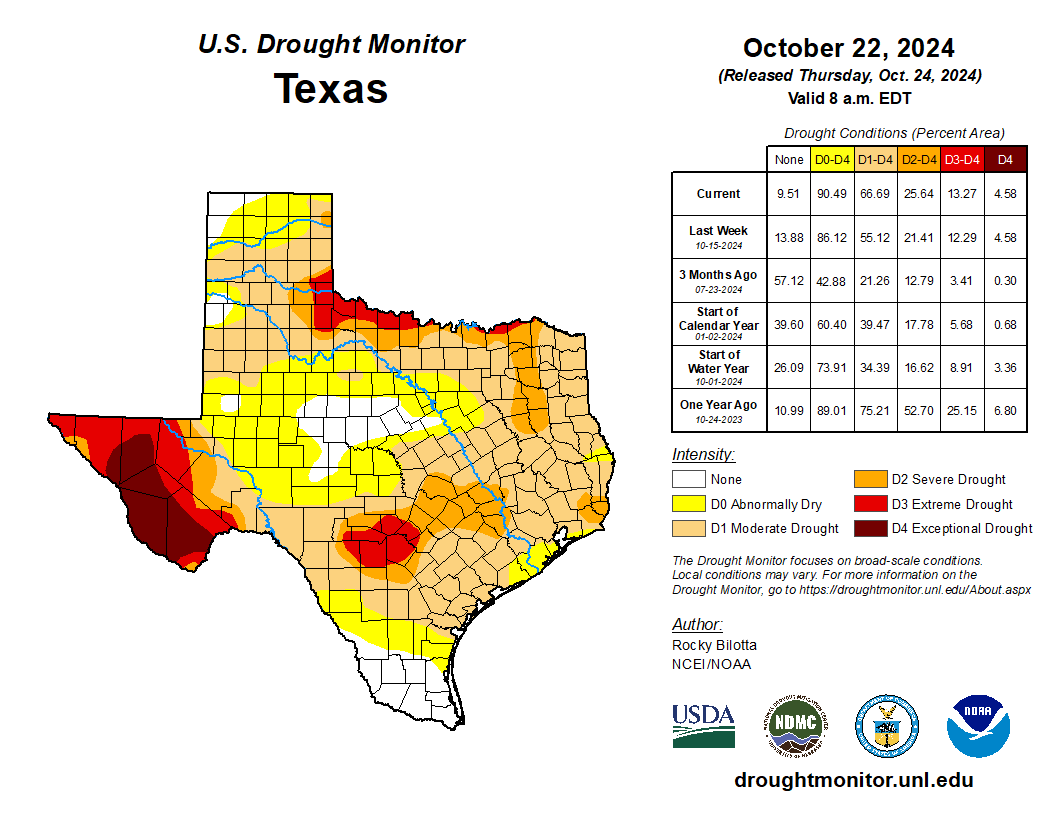Heartbeat of the Hickory: Fall 2024

The Changing Water Cycle
As part of the District’s outreach, we teach elementary students about the basics of the water cycle. Even adults sometimes forget the mechanics since we don’t really think about it much after the 5th grade.
A quick refresher:

Source: https://www.teachengineering.org/curricularunits/view/cub_water_cycle_unit
Evaporation occurs when the sun heats up surface water turning liquid into vapor which rises into the atmosphere. Wind also plays a part in this process. This part of the cycle is one we are all too familiar with in Central Texas. We often underestimate the effects of evaporation. For example, let’s look at a body of water that is just a little over ½ acre surface area (25,000 ft2). With a wind speed of 10 mph, air temperature of 80° F, and relative humidity of 10% (a typical autumn day in other words), the evaporation rate is 1,334.7 gallon/hour. To run your own calculations visit:
https://www.omnicalculator.com/physics/evaporation-rate
If these conditions were to persist 8 hours a day, in 15 days you’d lose a foot of water in you ½ acre tank.
Condensation is the next step. As the water vapor rises and cools, it turns back into liquid and forms drops. The droplets then join together and return to the earth as some form of precipitation. This is the part of the cycle we don’t get to see very often. Some of that liquid water stays in lakes, oceans, streams, etc. while some of the water continues its journey into aquifers.
This cycle continues to repeat itself until interrupted by outside forces. Unfortunately, that is happening according to several studies including one published in NatureWater in March 2024. https://www.nature.com/articles/s44221-024-00208-7 The study entitled “Notable shifts beyond pre-industrial streamflow and soil moisture conditions transgress the planetary boundary for freshwater change” published by a group of researchers, compares industrial to pre-industrial conditions, and notes a substantial negative shift in in streamflow and soil moisture under industrial conditions.
According to another report from the Global Commission on the Economics of Water, decades of harmful land use and poor water management have placed "unprecedented stress" on the water cycle. Disruptions to the water cycle are already leading to significant hardship. Almost 3 billion people are experiencing water scarcity, while crops are withering, and cities are sinking as groundwater depletion worsens. The report warns that the situation could become even more dire without immediate intervention. The water crisis endangers over 50% of global food production and could reduce average GDPs by 8% in many countries by 2050, with potential losses reaching up to 15% in low-income nations.
Admittedly, it is easy to feel helpless about affecting things on a global level, but as we constantly remind the public: “Every drop counts.” Do your part to use water sustainably. The average American family uses over 300 gallons of water a day. One-third of that water is for lawns. Nationwide, landscape irrigation uses 9 billion gallons of water every single day. Imagine the difference we could make if every one of us would reduce our use.



We have free copies of "Rural Water: Water Wells and Septic Systems" available to the public. You can visit our office to pick one up, or you can request a copy by sending us a note or giving us a call, and we’ll mail it to you. This 30-page booklet covers various rural water topics, including well maintenance, contamination prevention, and septic systems.

Save Water: The World is in your Hands
The theme for the 2025 Poster Contest is "Save Water: The World is in Your Hands." This contest is open to all 4th and 5th graders in the area. Prizes include a $50 Walmart gift card for first place, $45 for second, and $40 for third. Teachers received hand-delivered invitations along with goody bags and Hydrology books for their students.
Posters must be submitted by Friday, February 7, 2025, and will be judged at the next Board Meeting.
RAINWATER HARVESTING BARRELS
This summer the District provided educational programs to the McCulloch County Garden Club and Mason’s Cub Scout Pack 281. Along with educational materials, we donated a rainwater harvesting barrel at each event. You can see Pack 281’s barrel at the Discovery Garden behind the Mason County M. Beven Eckert Memorial Library

Visit https://droughtmonitor.unl.edu/CurrentMap/StateDroughtMonitor.aspx?TX for the latest drought monitor
| Board of Directors | |
|---|---|
| Amy Greer, President | Precinct 5 |
| Bill Sloan, Vice-President | Precinct 2 |
| Gay Nesloney, Secretary | Precinct 3 |
| Stephen Magill, Director | Precinct 4 |
| Shawn Oliver, Director | Precinct 1 |
| Staff | |
| David Huie | General Manager |
| Angelina Deans | Assistant Manger |
| Ronnie Moore | Lab/Field Tech |
